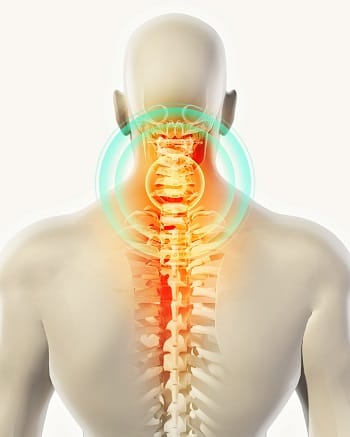Attending to spinal cord injury

A spinal cord injury can be a life-changing event. Depending on the severity of the injury, a person could require extensive rehabilitation and may never regain full function. New technology may make some people with spinal cord injuries more mobile.
When spinal cord injury is suspected
The Mayo Clinic advises that the care given immediately after an accident could be crucial. Sometimes it is not immediately apparent that the spinal cord is injured. An injured person may become numb or paralyzed gradually if there is bleeding around the spinal cord.
If there is any reason to suspect a back or neck injury, the injured person should not be moved until emergency medical personnel arrive. Simple first aid can include placing rolled-up towels or blankets against the person’s neck to keep it from moving while waiting for expert help.
Symptoms that could indicate a spinal cord injury include extreme pressure or pain in the back, neck or head. If hands or feet feel numb or tingly, or there is trouble with balance, that can also be a sign that the spinal cord is affected.
Consequences of injury
The location and the severity of a spinal cord injury determine how it will affect an injured person. Some injuries affect the lower part of the body, and some affect the upper torso and arms as well. If the injury is complete, that means all or nearly all motor function and sensation are lost below the level of the injury. If it is incomplete, some degree of function and sensation is retained.
The effects can include loss of the ability to feel heat, cold or touch and may involve paralysis, the inability to move the affected parts of the body. Some people lack bowel and bladder control. Breathing may be difficult.
New options
Several manufacturers have been working on devices that can help a person with a spinal cord injury stand and move. Because they provide a supportive framework around the legs and lower body, they have been referred to as “powered exoskeletons.” Using a battery pack, a powered exoskeleton operates much like a robot to help move the limbs of the person.
Physical therapists are supervising trials of these devices in rehabilitative centers. One recently designed model is fairly light, just 27 pounds. This device is controlled by the user leaning forward and sideways to take steps, and leaning back to stop. For balance, crutches are needed. It is constructed in pieces that fit into a backpack and can be assembled for use. A person could carry it while using a wheelchair, and then put it together and use it to walk.
This device and others like it are not yet covered by insurance, and they are not for everyone. Still, the research could be a promising advance in rehabilitative care for people with spinal injury.
Whatever the level and severity of a spinal cord injury, treatment is costly. If an accident or negligence caused the injury, it may be possible to file a personal injury claim to recover the cost of medical expenses and compensate for wages lost because of being unable to work. An attorney will be able to give realistic advice as to what may be gained and the possibility of prevailing in a lawsuit.
